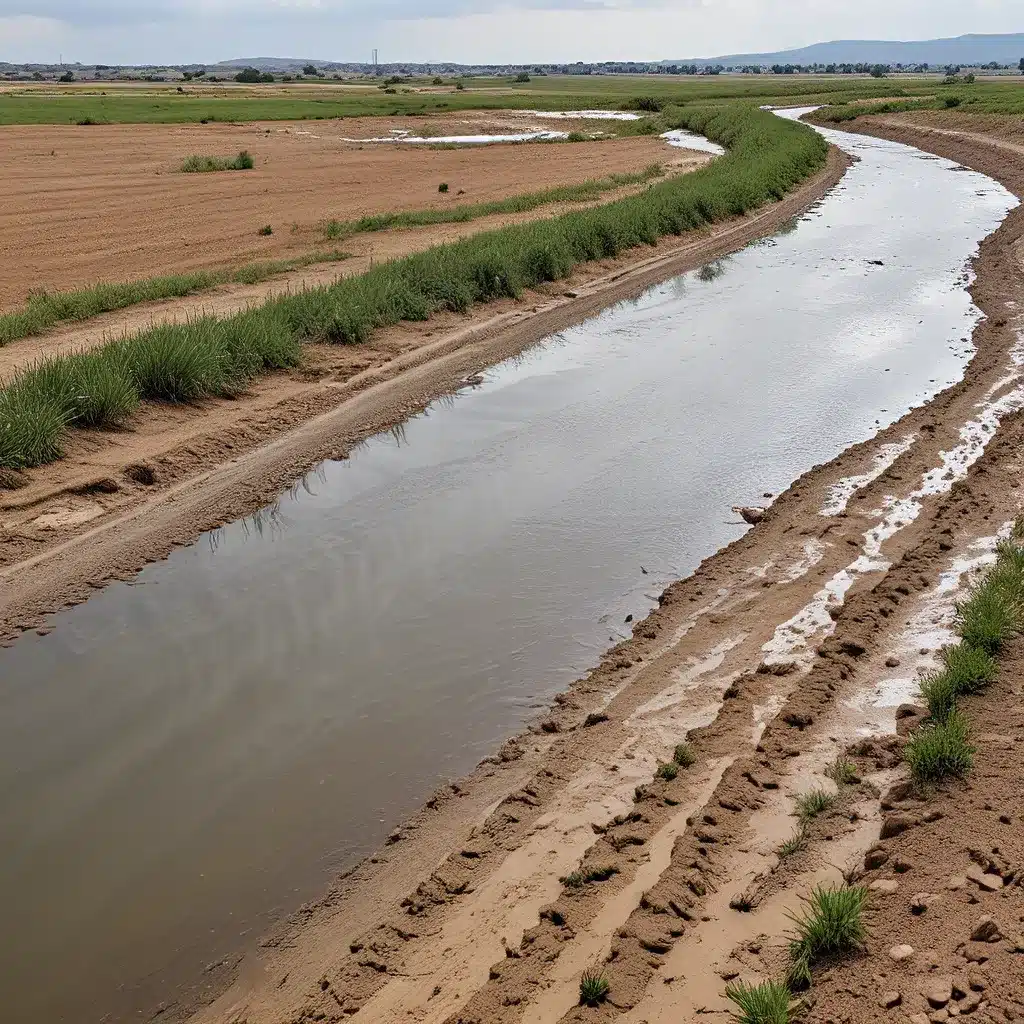
The Shifting Tides of Water Resilience
As I gaze out over the glistening expanse of our local reservoir, the once-familiar landscape has taken on a new character. The water levels are lower, the banks more exposed, a subtle shift that hints at the broader changes unfolding across our region. It’s a sobering reminder that the challenges of water management are no longer confined to the past – they’re evolving, shaped by the relentless forces of climate change.
Recent studies have painted a concerning picture, projecting that by 2050, over 5 billion people could be living in areas with insufficient freshwater supplies. The impacts of this crisis will be far-reaching, touching every aspect of our lives – from agriculture and industry to the very ecosystems we depend on. And yet, amidst this seemingly bleak future, I can’t help but feel a glimmer of hope.
Embracing the Ebb and Flow of Change
As water professionals, we stand at the forefront of a critical challenge: adapting our water management strategies to this new reality. It’s no longer enough to simply react to the changes; we must proactively reshape our approach, embracing the ebb and flow of a world in flux.
One of the key areas we’ve been exploring is the concept of resilience – the ability of our water systems to withstand, adapt, and even thrive in the face of adversity. California’s latest water plan, for instance, places a strong emphasis on building resilient infrastructure and fostering collaborative partnerships to address the state’s water challenges. This holistic approach recognizes that no single solution can meet the diverse needs of our communities.
Diversifying Our Water Portfolio
As we’ve delved deeper into the realm of water resilience, one thing has become abundantly clear: the days of relying on a single, reliable water source are long gone. Instead, we must embrace a diversified water portfolio – a strategic blend of traditional and innovative approaches that can adapt to the ebbs and flows of our changing climate.
This might involve expanding our use of desalination technology to tap into the vast, if salty, reserves of our oceans. It could also mean investing in water recycling and reuse systems, transforming wastewater into a valuable resource. And let’s not forget the power of groundwater management and aquifer recharge, techniques that can help us store and retrieve water when we need it most.
| Water Management Strategy | Potential Benefits | Drawbacks or Challenges |
|---|---|---|
| Desalination | – Taps into the vast reserves of seawater – Can provide a reliable, drought-resistant water supply |
– Energy-intensive process – Potential environmental impacts from brine discharge |
| Water Recycling and Reuse | – Transforms wastewater into a valuable resource – Reduces reliance on limited freshwater supplies |
– Public perception and acceptance hurdles – Requires advanced treatment technologies |
| Groundwater Management and Aquifer Recharge | – Stores water for use during dry periods – Can help replenish depleted aquifers |
– Requires extensive monitoring and management – Potential conflicts with other water users |
Of course, each of these strategies comes with its own unique set of challenges and tradeoffs. But by thoughtfully combining them, we can create a resilient, multi-faceted water system that can adapt to the ever-changing demands of our environment.
Harnessing the Power of Nature
As we explore these technological solutions, it’s important to remember that nature itself holds some of the most powerful tools for water resilience. Natural infrastructure, such as wetlands, floodplains, and healthy watersheds, can play a crucial role in regulating water flows, filtering contaminants, and recharging aquifers.
Recent research has shown that strategic investments in natural infrastructure can provide a cost-effective way to enhance water security, while also delivering a host of other environmental and social benefits. By working in harmony with nature, rather than against it, we can create more resilient and sustainable water systems.
Fostering Collaborative Partnerships
But building water resilience is not a solo endeavor. It requires a collaborative effort, bringing together diverse stakeholders – from policymakers and industry leaders to community groups and environmental advocates. By fostering these partnerships, we can leverage our collective knowledge, resources, and perspectives to develop tailored solutions that meet the unique needs of our local communities.
As the World Economic Forum has highlighted, this collaborative approach is crucial for addressing the complex, interconnected challenges of water management and climate change. It allows us to move beyond siloed thinking and work towards a more holistic, integrated vision for the future of our water resources.
Empowering Communities through Education and Engagement
At the heart of this collaborative effort lies the need for public education and community engagement. After all, the success of our water resilience strategies ultimately depends on the support and participation of the people we serve.
By fostering a deeper understanding of the water challenges we face and the solutions we’re pursuing, we can empower our communities to become active partners in this journey. This might involve hosting public workshops, launching educational campaigns, or even inviting community members to participate in the decision-making process.
Embracing the Ebb and Flow of Change
As I stand here, watching the gentle ripples on the surface of the reservoir, I’m reminded that change is the only constant in our world. And in the face of the climate challenge, our ability to adapt and thrive will be the key to ensuring the long-term resilience of our water systems.
It won’t be easy, and there will undoubtedly be setbacks and surprises along the way. But by embracing the ebb and flow of change, by harnessing the power of technology and nature, and by fostering collaborative partnerships, I believe we can create a future where water resilience is not just a dream, but a reality.
So let’s dive in, my friends, and work together to build a more resilient, sustainable water future for all. After all, the tides of change are rising, and we’re the ones who will navigate them.


